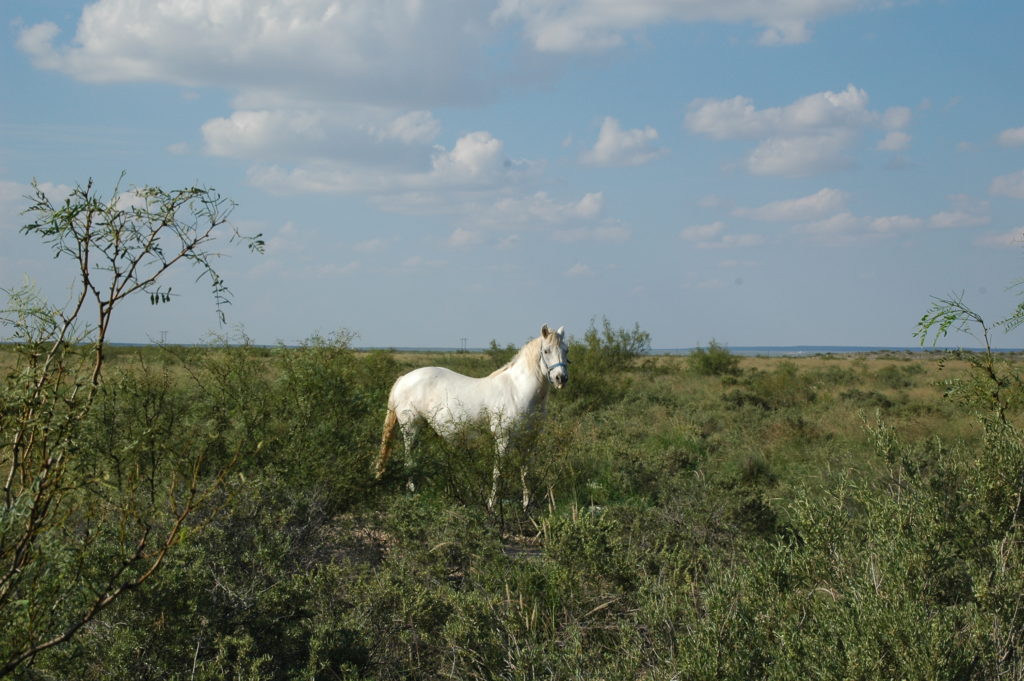Ranching in Texas: The Legacy of King Ranch
According to Texas Monthly, as late as the 1830s, the words “of this land, nothing is known,” appeared on maps depicting South Texas. Today, of course, much is known about South Texas and West Texas, as it is a rich and diverse land, developed and undeveloped and ready to be lived on and explored. What is today known as the biggest ranch in Texas, (often cited to be bigger than the state of Rhode Island) first began as quite inhospitable, wild, undeveloped wasteland.
There’s a reason why many people’s perception or first image of Texas goes something like this: a wide azure sky with rolling clouds, a bright haze of sunlight glittered with the rising dust kicked up by horse hooves, and plaid-wearing vaqueros herding amidst a sea of cattle. Perhaps there is an image of a great expanse of land, desert-like landscape, and wild horses running through the blazing sun. For many people, Texas remains a land of romantic escapades, wide-open land, and freedom. And while it’s not the wild west it once was—with duels, saloons, and outlaws — it’s still very much a state that prioritizes liberty, hard work, and innovation.
As your trusted resource for finding Texas acreage, Lone Star Investments thought we’d take a look at one of the most well-known ranches in Texas, King Ranch, and the legacy of ranching in the Lone Star State.
The Forming Legacy of Thousands of Texas Acres
King Ranch is one of those legendary places that form part of the Texas legacy and history. It now covers over 825,000 acres. Throughout its history, King Ranch led some of the first cattle drives. It has also developed a specific breed of cattle called the Santa Gertrudis and Santa Cruz breeds, bred the finest horses, and produced Thoroughbreds.
The Santa Gertrudis cattle are named after the Rincon of Santa Gertrudis, an old Spanish land grant that sits at the heart of the whole ranch. To Captain Richard King, the land appeared, like a lot of land in Texas at that time, unpopulated and desolated. King would make over 60 purchases of land in his lifetime and by the end of his life, he was not only the richest man in Texas, but he owned more than half a million acres.
Before the king untangled the titles and managed to purchase those acres, hunter-gatherer Indians hunted deer, got shellfish, and more in the area. As the American settlers trickled into the area, they settled mostly north and east of the Nueces River. At that time, the incoming settlers were interested in cotton. Cattle did not yet rule the land. When King decided to begin his kingdom, he had cattle in mind.
After a century of development, the King Ranch was one of a kind in the world. It had worked its way up in stature, challenging Kentucky’s dominance on Thoroughbreds, competing with horse racing empires in the East Coast, had a new breed of cattle, and was even pumping out oil from oil wells. The glorious success of King Ranch gave it a kind of folkloric mystique that it possesses even today. It became part of the heart of Texas, but the journey was not particularly easy. Ranches like this fought off attempts by the state to build highways that ran through them and connected Corpus Cristi with Brownsville.
The El Paso Connection — History Through a Beloved Artist’s Hand
A mythology has certainly grown with King Ranch. In 1947, Bob Kleberg, who was a descendant of King, made the cover of Time magazine. This was the first time that a rancher made the magazine’s cover. King and his descendants were notoriously averse to having writers and historians dig into their story. Yet, in 1951, they opted for a well-known El Paso artist, Tom Lea, to write one.
Tom Lea is a beloved El Paso artist, a man of many talents, he made his name by capturing the unique landscapes of West Texas: horses, cattle, cowboys, and extraordinary depictions of his type spent in the South Pacific during World War II. Lea was given access to the King Ranch’s vault of information and wrote what would be known as the official history of the Ranch.
Early Ranching in Texas
Early ranching in Texas began with many Spanish settlers coming up from areas like Nuevo Leon, Coahuila and Queretaro. These settlers had experience raising cattle in arid conditions and adopted the area of the Rio Grande as one major region. The Rio Grande region, along with areas in San Antonio and others were the birthplace of Texas ranching.
In 2017, Texas farms sold $24.9 billion in agricultural products. The state leads the country in the number of farms and ranches. The tradition has a long standing history and King Ranch is only one story of one extraordinary man who truly did build a kingdom.
Start Your Own Kingdom and Dream With Texas Acreage
One of King’s famous phrases was “Buy land, and never sell.” This was a motto that served him well and took him straight to the history books—an archetypal Texan who stood by his dream and persevere with grit and tenacity. Join the legacy with your own acreage. Whether you want to start your own family ranch, use it for hunting, or to build your dream home, it all begins with a piece of land. Contact Lone Star Investments to find out how to get your hands on beautiful Texas acres.
Sources: Texas Monthly, Texas Department of Agriculture,
